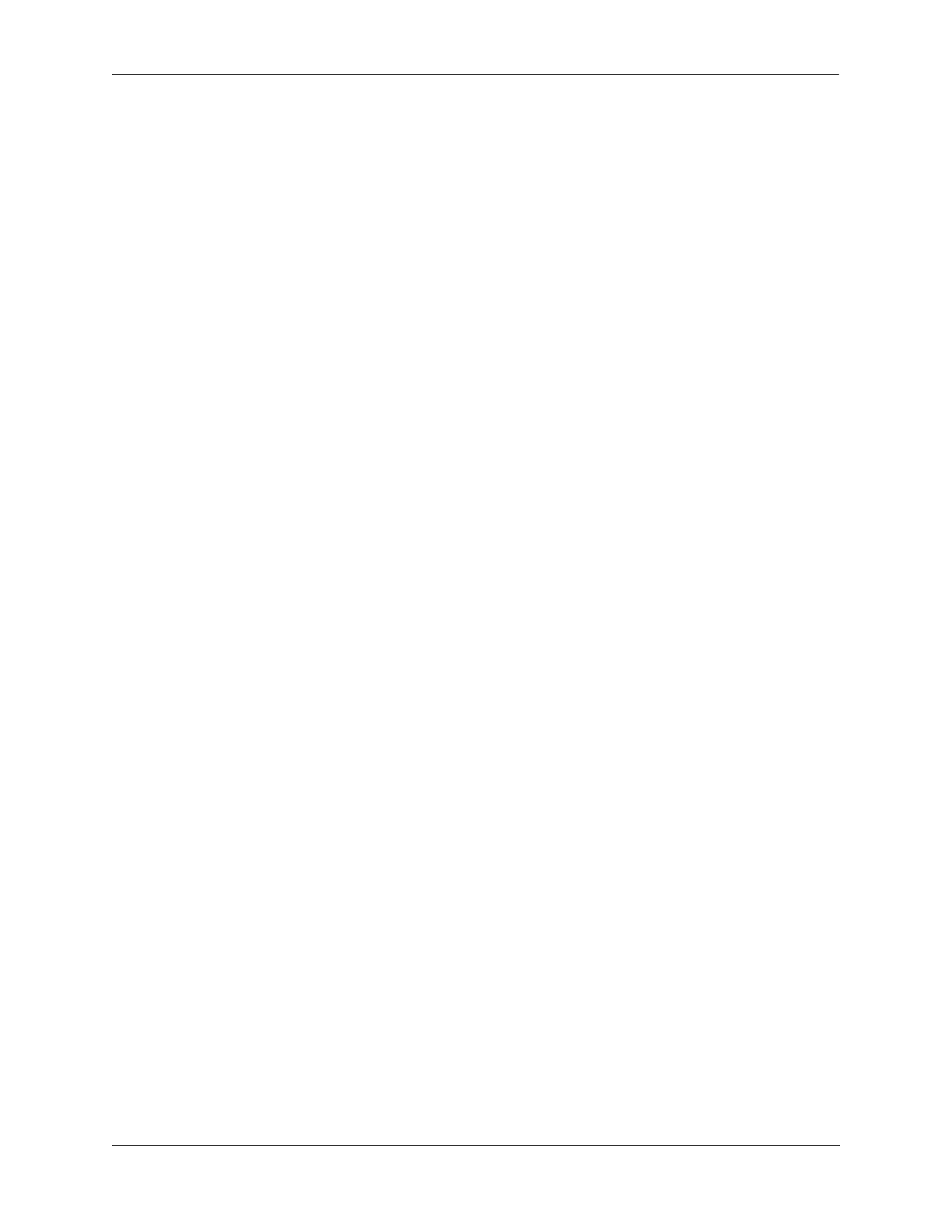Configuring BFD Configuring BFD
OmniSwitch AOS Release 8 Network Configuration Guide December 2017 page 20-25
-> show ipv6 ospf interface
IPv6
Admin Intf Intf Intf BFD
Name DR Router ID BDR Router ID Status Status Type State Status
----------+-------------+--------------+---------+------+------+-------+--------
vlan-2071 5.5.5.5 0.0.0.0 Enabled Up BCAST DR Enabled
vlan-2055 7.7.7.7 5.5.5.5 Enabled Up BCAST BDR Enabled
vlan-2056 7.7.7.7 5.5.5.5 Enabled Up BCAST BDR Disabled
5 Once OSPF or OSPFv3 is registered with BFD at the protocol level and BFD is enabled on the desired
OSPF or OSPFv3 interface(s), use the show ip|ipv6 bfd interfaces command to display BFD-enabled
interfaces. For example:
-> show ip bfd interfaces
Interface Admin Tx Min Rx Min EchoRx Detect OperStatus
Name Status Interval Interval Interval Multiplier
---------+--------+---------+---------+----------+----------+----------
bfd-intf1 enabled 300 300 300 3 UP
bfd-intf2 enabled 300 300 300 3 UP
-> show ipv6 bfd interfaces
Interface Admin Tx Min Rx Min EchoRx Detect Oper
Name Status Interval Interval Interval Mult Status
---------------------+----------+----------+----------+----------+------+------
bfd-intf3 disabled 300 300 300 3 DOWN
6 To establish BFD sessions with neighbors that are in full state only, enter the ip ospf interface bfd-
state drs-only or the ipv6 ospf interface bfd-state drs-only command as shown below:
-> ip ospf interface int1 bfd-state drs-only
-> ipv6 ospf interface int2 bfd-state drs-only
The above commands establish a BFD session on interface named int1 with OSPF DR neighbors in full
state only and on interface named int2 with OSPFv3 DR neighbors in full state only.
To establish a BFD session on an interface with all neighbors which are greater than or equal to “2-way”
state, use the ip ospf interface bfd-state all-neighbors or the ipv6 ospf interface bfd-state all-neighbors
command as shown below:
-> ip ospf interface int2 bfd-state all-neighbors enable
-> ipv6 ospf interface int3 bfd-state all-neighbors enable
The above commands establish a BFD session on interface named int2 with all OSPF neighbors that are
greater than or equal to “2-way” state and on interface named int3 with OSPFv3 neighbors that are greater
than or equal to “2-way” state.
When any neighbors are added to either interface, OSPF informs BFD about the newly added neighbor(s);
BFD then establishes a session with them. Use the show ip|ipv6 bfd sessions command to view BFD
sessions with all BFD neighbors, as shown below:
-> show ip bfd sessions
Legends: Neg. = Negotiated
Discr = Discriminator
Intvl = Interval (in milliseconds)
Local Interface Neighbor State Remote Neg. Rx Neg. Tx EchoRx
Discr Name Address Discr Intvl Intvl Intvl
------+-----------+--------------+----------+------+----------+--------+-------
1 v1001 101.1.1.11 UP 1 300 300 300
2 v2000 200.1.1.1 UP 0 0 0 300

